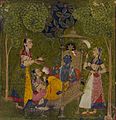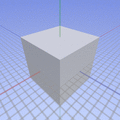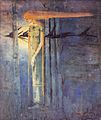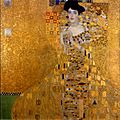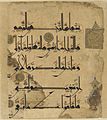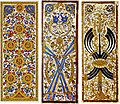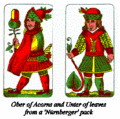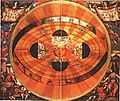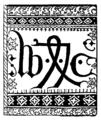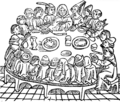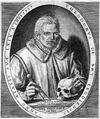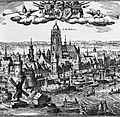History of graphic design facts for kids
Graphics (from Greek γραφικός) are visual presentations on some surface, such as a wall, canvas, computer screen, paper, or stone. It includes everything that relates to creation of signs, charts, logos, graphs, drawings, symbols, geometric designs and so on.
Graphic design is the art or profession of combining text and pictures in art, advertisements, publications, or websites. The aim of graphics is to brand, inform, and have a specific effect on its audience.
Contents
- History of graphics
- Calligraphy & graphics in books
- Graphic compositions in Asia
- Decorative graphic design in pottery
- Birth of modern graphic design
- Mondrian's minimalism revolution
- Communication with pictures
- Information signs: Isotype and the Viennese method
- Dynamic designs, and computer animation
- Placards and posters
- Art nouveau posters and the impact of graphics on painting
- Posters after World War II
- Graphic design in modern life
- Images for kids
History of graphics
Hundreds of graphic designs of animals were made by primitive people in Chauvet cave, in the south of France, about 30,000 BC. Also, similar art was done in the Lascaux cave, France, about 14,000 BC. The art of primitive hunters is found in the rocks of Bhimbetka in India, drawn earlier than 7000 BC. Aboriginal rock art in Kakadu National Park of Australia, show that graphics has a long history in many parts of the world. This history (with writing, which emerged in 3000–4000 BC) are the foundation of graphic art.
Rock and cave art
Writing
Calligraphy & graphics in books
Religious books have used graphics extensively. Among these books are Bibles that were created in the monasteries in Ireland, Scotland, and England. Spiralling and interlocking patterns, often including small figures, were part of the ancient graphic tradition of the British Isles. From the 6th century onwards these were applied to the decoration of illuminated gospels.
-
A page from the Lindisfarne Bible, 7th or 8th century
-
A graphic decoration from the Lichfield gospel, 8th century
-
A graphic decoration in the Book of Kells, 6th–9th century
-
Calligraphy came to Japan in the 3rd century BC from China (Warring States Period). Japanese used calligraphy to write haiku.
Graphics in the Quran
In Islamic countries the graphic designs can be found in their holy book, the Quran. The Quran was first wriiten an angled style called Kufi. This appeared in the 8th century, and reached its peak in the 10th century. Later on decoration of margin, page and other graphic techniques were added to beautify the book. In the 12th century the Naskh script was invented: it used curves instead of angled lines. Other styles were added later on.
Graphics and miniatures
Graphic compositions in Asia
-
An 18th C. wood print by Japanese artist Toshusai Sharaku. Japanese wood prints and painting influenced the design of modern posters by such as Toulouse Lautrec.
Decorative graphic design in pottery
From ancient times graphic design has been used for decoration of pottery and ceramics.
Birth of modern graphic design
William Morris had an influence on modern graphics. In the second half of 19th century his Kelmscott Press produced many graphic designs, and created a collector market for this kind of art. In Oxford he was associated with artists like Burne-Jones, and Dante Gabriel Rossetti. They formed the Pre-Raphaelites group, whose ideas influenced modern graphic design considerably.
-
This book of poetry, by the famous Persian poet Omar Khayyam, is a graphic calligraphy and decorative design by Morris, and painting by Edward Burne-Jones.
Mondrian's minimalism revolution
The Dutch painter Piet Mondrian in the years 1920–21 courageously introduced the style of minimalism in painting. His simple geometric compositions, together with the use of only three basic colors, blue, yellow, and red, in combination with black and white created a new venue for the graphic designers. He demonstrated that with simple relocation of these colors, and experimenting with the proportionality of various square surfaces, one can achieve extremely different ambiances and various feelings. For the graphic designers who intend to convey a message with a minimum interference from the extraneous elements his experiment in minimalism was a valuable gift.
Communication with pictures
Logos and trademarks
A trademark, identified by the symbols ™ and ®, or mark is a distinctive sign or indicator used by an individual, company or other entity to identify its products or services and to distinguish them from those of other producers. A trademark is a type of intellectual property, and typically a name, word, phrase, logo, symbol, design, image, or a combination of these elements.
-
Coca-Cola by Frank Mason Robinson in 1885. This logotype has been around for more than a century: a successful design creates a sense of loyalty among its customers.
Signs of culture and peace
-
This flag of the Olympic Games, by Pierre de Coubertin. It is symbolic: the linked rings are the five continents, and the six colours are from national flags.
Information signs: Isotype and the Viennese method
In 1921, Otto Neurath, an Austrian social scientist, introduced graphic design to help the understanding of social and economical data. In 1925, the Museum of Economy and Society used such graphics for the public. This style of presentation at the time was called the Viennese method, but now it is known as Isotype charts.
-
Typical Isotype chart showing social statistics.
-
Pages from the book Basic by Isotype by Otto Neurath, 1937. The book showed graphics for Basic English words.
Dynamic designs, and computer animation
-
This animation was created from photos taken by Eadweard Muybridge in 1887.
Placards and posters
Placards and posters existed from ancient times. The Greek axons and the Roman Albums, with their decorative designs and announcements, were quite similar to today's posters. In ancient Greece the names of athletes and games schedules were written on columns that were slowly turning on an axis. Romans used whitewashed walls in their markets in which sellers, money lenders, and slave traders wrote their announcements and advertised for their products, and to attract the attention of customers they added an attractive design.
With the invention of printing, in 1440, and particularly the development of the lithographic process, invented by a Czech named Alois Senefelder in 1798 in Austria, creation of posters became feasible. Although handmade posters existed before, they were mainly used for government announcements. William Caxton, who in 1477 started a printing company in England, produced the first printed poster.
In 1870, the advertising poster emerged.
Art nouveau posters and the impact of graphics on painting
-
The fin de siècle English artist Aubrey Beardsley created highly decorative posters, based on flowing lines and elongated figures.
-
Alphonse Mucha designed posters with elegant, joyous young women surrounded by decorative flowers. He used a soft pastel coloring scheme in his posters.
-
Graphic design influenced paintings in the works of Art Nouveau artists like Margaret MacDonald Mackintosh and her brother Frances Macdonald.
-
The works of Gustav Klimt are a clear example of the influence of graphic design on painting. Portrait of Adele Bloch-Bauer
Posters after World War II
After the Second World War, with the emergence of new color printing technology and particularly appearance of computers, the art of posters underwent a new revolutionary phase. People can create color posters on their laptop computers and create color prints at a very low cost. Unfortunately, the high cost of sophisticated printing processes can only be afforded mostly by government entities and large corporations. With the emergence of the internet, the role of posters in conveying information has greatly diminished. However, some artists still use chromolithography in order to create works of art in the form of print. In this regard the difference between painting and print has been narrowed considerably.
-
This political poster by Tiocfaidh Ár Lá, about Ulster, is a low-cost, effective poster with only a few basic ink colors.
-
A magazine cover from a poster by Guity Novin. The artist uses only two colors (orange and green) on a yellow background.
Graphic design in modern life
Today graphic design has penetrated into all aspects of modern life. In particular modern architecture has been influenced by graphics.
-
Robert Smithson's Spiral Jetty (1970) on the Great Salt Lake in Utah. With black basalt and earth from the site, he made a design 1,500 feet long and 15 feet wide.
Images for kids
-
The Ada Gospels are one of a group of manuscripts, known to modern scholars as the Ada School. Its illuminations include an elaborate initial page for the Gospel of Matthew and portraits of Matthew, Mark and Luke. Late 8th century
-
Opening page of Book of Durrow, 7th century
-
These are Card designs from the Mamluk Sultanate of Egypt. c. 1500. According to a passage in Ibn Taghri Birdi's HISTORY OF EGYPT, 1382-1469 A.D., the future sultan al-Malik al-Mu'ayyad won a large sum of money in a game of cards. In the Islamic empire playing cards the suits were coins, cups, swords, and polo sticks.
-
Astronomical charts have a long history. For instance, an engraving of an ancient Egyptian diagram of the heavens from the Temple of Dendara, depicts the sky on the date of the founding of the temple in 54 BC. The above chart is an astronomical map of the sky drawn by Nicholas Copernicus in 1543 that replaced an earlier chart by Cellarius showing the Earth centred universe.
-
Theodor de Bry (1528 – 1598) was an engraver, goldsmith and editor. An engraving portrait of Theodorus de Bry, by himself and confirming his origins from Liège, in Latin "Leodiensis", between brackets: (a city at that time belonging neither to Flanders or Wallonia, or even to Belgium).
-
Albrecht Dürer, St Jerome in his study. Albrecht Dürer was a German painter and printmaker. (1514)
-
Ecce Homo, Engraving, 15th century, by Martin Schongauer(c. 1448 – 1491). He was a German engraver and painter, and was the most important German printmaker before Albrecht Dürer.
-
Matthäus Merian, View of Frankfurt, between 1612 and 1619. Merian was a notable Swiss engraver.






















